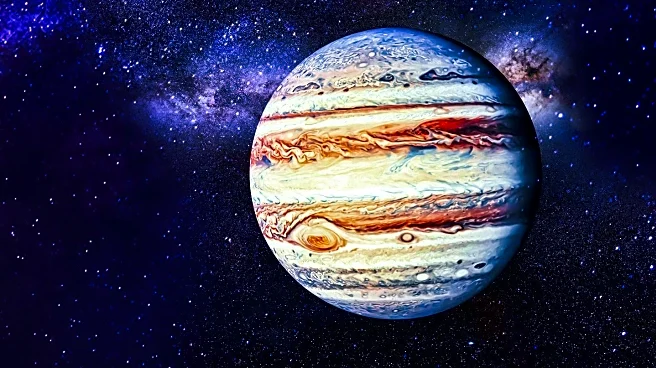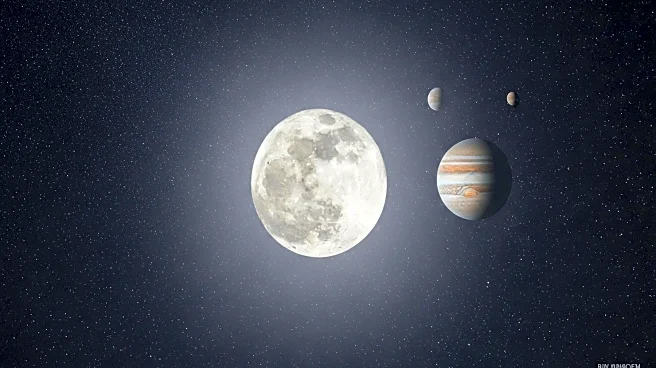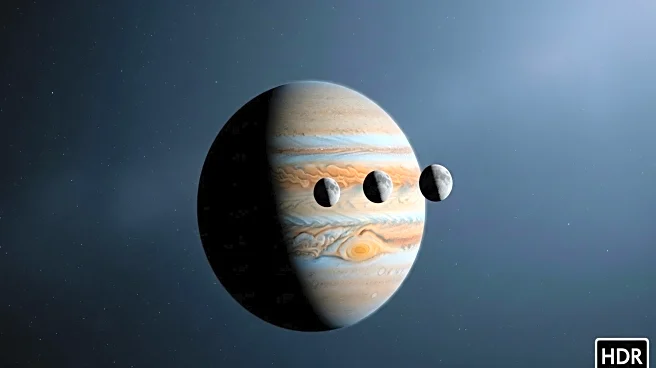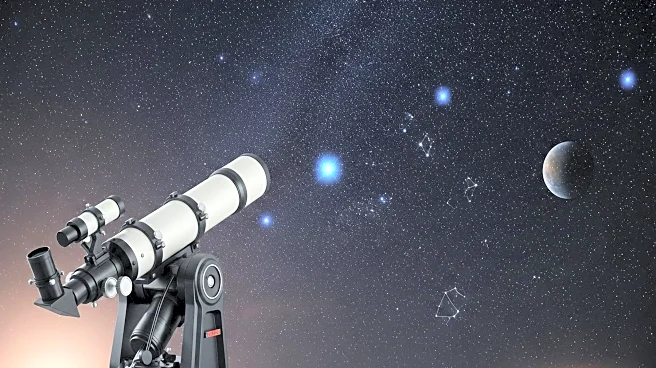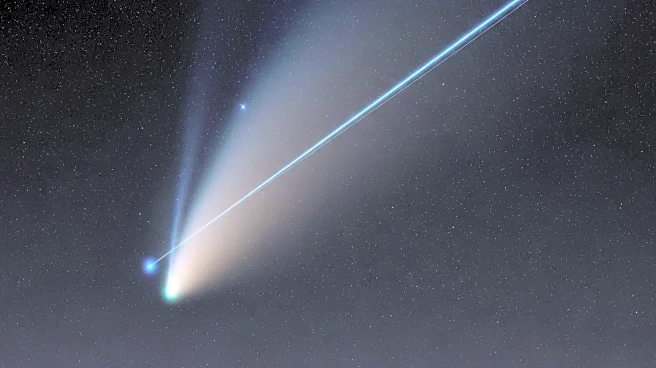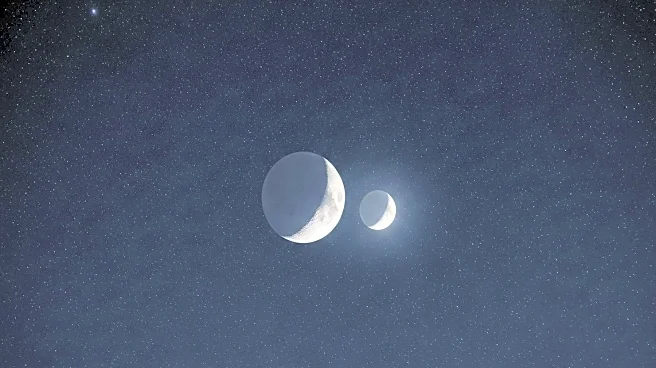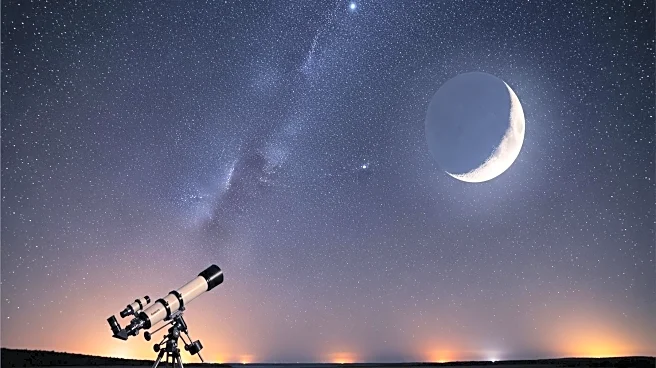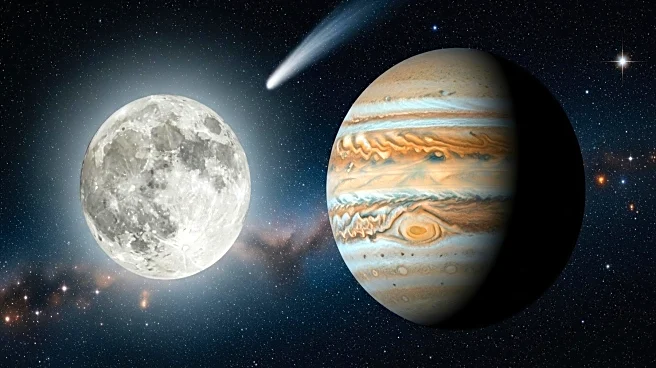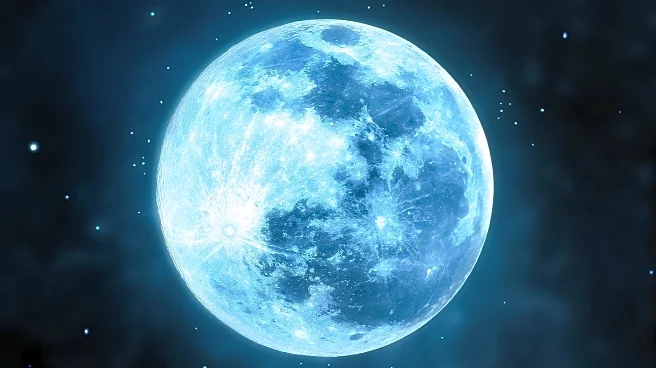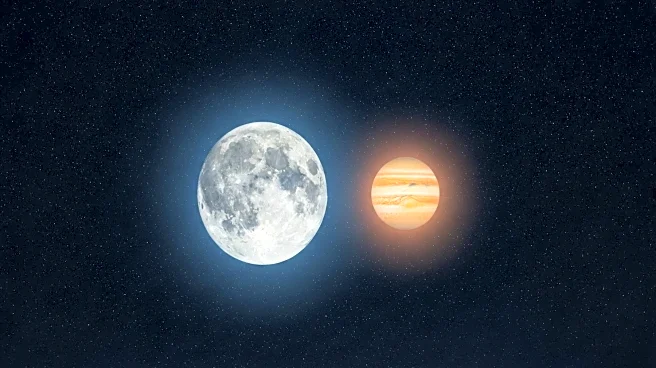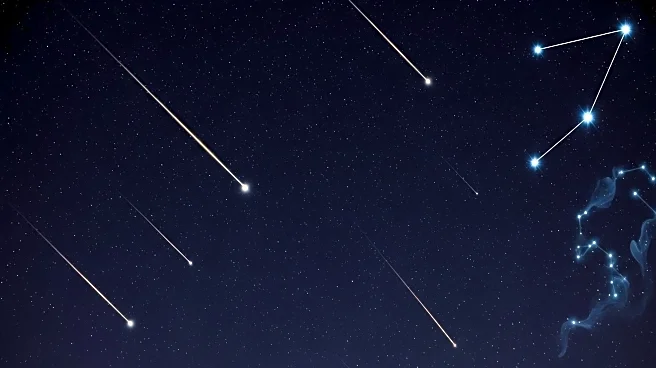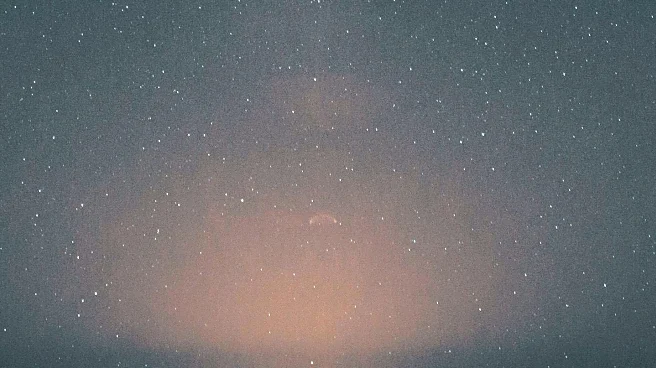What is the story about?
What's Happening?
Astronomy enthusiasts are invited to observe a celestial event where the Moon will appear in close proximity to Jupiter. This alignment is scheduled for the early morning hours of October 14, with Jupiter positioned in the constellation Gemini. Despite the Moon not being at its peak brightness, Jupiter's inherent luminosity will make it easily visible. Dave Eicher, Editor Emeritus of Astronomy magazine, encourages stargazers to take advantage of this opportunity to witness the event. The Moon's apparent size is noted to be larger due to the distance of Jupiter, offering a unique viewing experience.
Why It's Important?
This event provides a chance for amateur astronomers and the general public to engage with the night sky, fostering interest in astronomy and celestial phenomena. Observing such alignments can enhance understanding of planetary movements and constellations. It also serves as an educational opportunity, potentially inspiring future astronomers and scientists. The visibility of Jupiter, despite the Moon's brightness, underscores the planet's significant luminosity, offering insights into its characteristics and position in the solar system.
What's Next?
Stargazers are encouraged to prepare for the early morning observation by finding locations with minimal light pollution to maximize visibility. Astronomy clubs and educational institutions may organize viewing events to facilitate community engagement and learning. Future celestial events will continue to be highlighted by Astronomy magazine, providing ongoing opportunities for public participation in astronomical observations.
Beyond the Headlines
The event highlights the importance of public engagement in science and the role of media in promoting educational activities. It underscores the cultural significance of astronomy as a bridge between science and society, encouraging curiosity and exploration beyond Earth. Such events can also stimulate discussions on space exploration and the technological advancements that enable us to study distant planets and stars.
AI Generated Content
Do you find this article useful?
